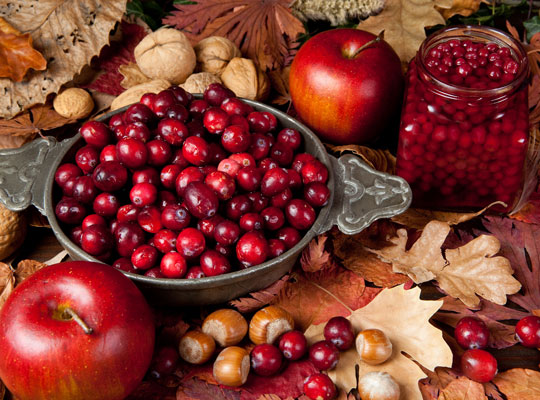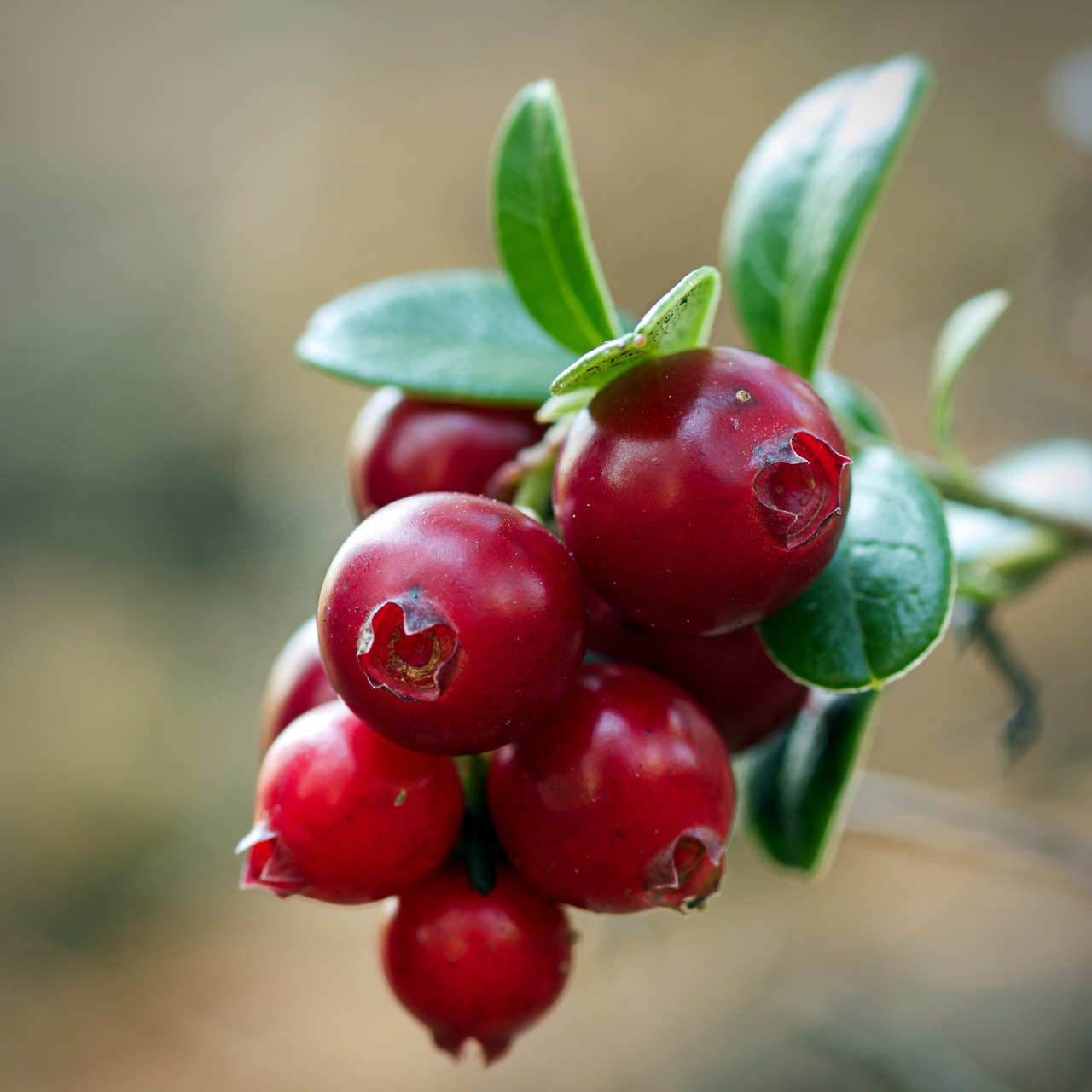Thanksgiving and Cranberries
Searcy, Ark. – Thanksgiving dinner is the largest eating event in the United States. People eat more
on Thanksgiving Day than any other day of the year. How did this tradition get started?
We have our early Pilgrims and Indians to thank for this tradition. Without the joining
of the Pilgrims and Indians, we may not have had a Thanksgiving to enjoy.
Thanksgiving dinner is the largest eating event in the United States. People eat more
on Thanksgiving Day than any other day of the year. How did this tradition get started?
We have our early Pilgrims and Indians to thank for this tradition. Without the joining
of the Pilgrims and Indians, we may not have had a Thanksgiving to enjoy.
The Pilgrims’ Journey and First Year
You likely remember the story of how the Pilgrims set sail on September 6, 1620 for the New World on the Mayflower.
They set ground at Plymouth Rock on December 11, 1620. Their first winter was devastating. The cold snow and sleet were exceptionally heavy, interfering with the workers as they tried to construct their settlement. Many died during the hard, long winter.
The Role of the Wampanoag and the First Feast
Thanks to an Indian brave who taught the Pilgrims how to tap maple trees for sap, how to plant Indian corn, and other crops, the harvest of 1621 was a bountiful one. It has been said that they would not have survived without his help.
The First Thanksgiving: A Celebration of Survival
The Pilgrims decided to celebrate their bountiful harvest with a feast, by including the Wampanoag Indians who had helped the Pilgrims survive their first year. The feast, which lasted three days, was more of a traditional English harvest festival than a true "thanksgiving" observance.
The Evolution of the Thanksgiving Menu
The Pilgrim Governor, William Bradford, proclaimed a day of Thanksgiving to be shared by all colonists and neighboring Native Americans. It is not certain whether wild turkey was part of their first feast. It is suggested that the first turkey added to Thanksgiving dinner was after 1800. By 1857, turkey had become part of the traditional dinner in New England. However, it is certain that they had venison, ducks, geese and even swans.
Staple Foods at the First Feast
One of the staples at Thanksgiving is pumpkin pie. It is unlikely that the first feast included that treat. The supply of flour had been long diminished, so there was no bread or pastries of any kind. However, they did eat boiled pumpkin, and they produced a type of fried bread from their corn crop.
There was no milk, cider, potatoes, or butter, as well as no domestic cattle for dairy products. The newly discovered potato was still considered by many to be poisonous. But the feast did include fish, waterfowl, clams, berries, watercress, lobster, dried fruit, clams, venison, pumpkin and plums.
Thanksgiving Becomes a National Holiday
In 1789, George Washington proclaimed a National Day of Thanksgiving, in honor of the ratification of the Constitution of the United States. Later, in 1863, during the American Civil War, President Abraham Lincoln proclaimed the last Thursday in November Thanksgiving Day.
After the war, Congress established Thanksgiving as a national holiday. Although other countries celebrate their own Thanksgiving, it is seen as a time in the United States to focus on the home and family, with friends and traditional foods.
The History of Cranberries and Their Role in Thanksgiving
 Now that we know a little about the history of the first thanksgiving dinner, here’s
a bit of information about cranberries.
Now that we know a little about the history of the first thanksgiving dinner, here’s
a bit of information about cranberries.
According to Cranberries.org, Tens of thousands of years ago, receding glaciers carved out cavities in the land that evolved into cranberry bogs. Newly formed kettle ponds filled with sand, clay and debris formed the perfect environment for vines to spread across the South Shore, Cape Cod, Martha’s Vineyard and Nantucket. Massachusetts was born with cranberry bogs. For two hundred years, it has been where tradition has met innovation.
The Wampanoag and Their Cranberry Traditions
Wampanoag People across southeastern Massachusetts have enjoyed the annual harvest of sasumuneash - wild cranberries - for 12,000 years. Some ate berries fresh while others dried them to make nasampe (grits) or pemmican - a mix of berries, dried meat and animal fat which could last for months. Medicine men, or powwows, used cranberries in traditional healing rituals to fight fever, swelling, and even seasickness.
European Settlers and the Birth of Cranberry Cultivation
Europeans exploring and settling New England in the 16th and 17th centuries were not surprised to see sasumuneash. Many were familiar with European cranberry varieties which grew in the boggy regions of southern England and in the low-lying Netherlands. The English had many names for the fruit, but “craneberries” was the most common because many thought the flower resembled the head of a Sandhill crane.
Innovation in Cranberry Farming: Sand and Cultivation
Cultivation of the cranberry began in 1816, shortly after Captain Henry Hall, a Revolutionary War veteran, of Dennis, Massachusetts, noticed that the wild cranberries in his bogs grew better when sand blew over them. Captain Hall began transplanting cranberry vines and spreading sand on them. When others heard of Hall's technique, it was quickly copied. Continuing throughout the 19th century, the number of growers increased steadily.
While initially criticized for tinkering with vines, the idea of growing and selling cranberries commercially soon caught on, and local landowners eagerly converted their swamps, wetlands, peat swamps and wet meadows into cranberry bogs. By 1885, Plymouth County boasted 1,347 acres under cultivation; Barnstable County had 2,408. By 1900, the number of acres tripled, making Cape Cod a household name. “Cranberry Fever” struck and the industry boomed. As late as 1927, the cranberry harvest remained so vital to local and state economies that Massachusetts children could be excused from school to work the bogs during harvest season.
Cranberries Become a Thriving Industry
Expansion fueled innovation. Growing cranberries demanded long hours of back-breaking work. Farmers eagerly sought new tools to build better bogs and harvest cranberries more efficiently. In the 1880s, wooden cranberry scoops started to replace traditional hand-picking; sorters and screening equipment soon followed. Expansion also meant new workers on the bogs. Although many growers still relied on traditional family and community support during the harvest, demands for higher wages provided opportunities for newly arrived immigrants from Finland and the Cape Verdean Islands seeking better economic opportunities and the chance at an improved life.
Expansion and increased global demand also meant the need for a system of grading and branding berries. New agricultural co-ops like the Cape Cod Cranberry Sales Company set market prices for berries and regulated distribution to ensure that growers received the fairest prices for their berries and customers got the best product.
By 1871, the first association of cranberry growers had formed and now, U.S. Farmers harvest approximately 40,000 acres of cranberries each year.
Today, the industry continues to grow and evolve to meet new demands and tastes for sweet, sour and everything in between. Cranberry growers remain innovators - as flexible and adaptable as ever. Recent slow and local food movements rekindled interest among consumers in food origins, offering growers a chance to showcase their craft and passion with new audiences.
By Sherri Sanders
County Extension Agent - Agriculture
The Cooperative Extension Service
U of A System Division of Agriculture
Media Contact: Sherri Sanders
County Extension Agent - Agriculture
U of A Division of Agriculture
Cooperative Extension Service
2400 Old Searcy Landing Road Searcy AR 72143
(501) 268-5394
ssanders@uada.edu
The Arkansas Cooperative Extension Service is an equal opportunity institution. If
you require a reasonable accommodation to participate or need materials in another
format, please contact your County Extension office (or other appropriate office)
as soon as possible. Dial 711 for Arkansas Relay.
Pursuant to 7 CFR § 15.3, the University of Arkansas System Division of Agriculture
offers all its Extension and Research programs and services (including employment)
without regard to race, color, sex, national origin, religion, age, disability, marital
or veteran status, genetic information, sexual preference, pregnancy or any other
legally protected status, and is an equal opportunity institution.